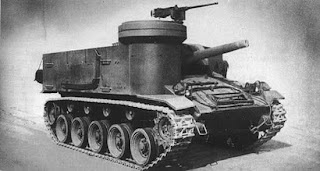
The drive train was electrical, designed to provide a maximum speed of 20 km/h (12 mph) and a minimum speed of 1.5 km/h (0.9 mph). The principal problem in the design of the Maus was developing an engine and drivetrain which was powerful enough to adequately propel the tank, yet small enough to fit inside it – as it was meant to use the same sort of "hybrid drive", using an internal-combustion engine to operate an electric generator to power its tracks with electric motor units, much as its Porsche-designed predecessors, the VK 30.01 (P), VK 45.01 (P), and Elefant had. The 128 mm gun was powerful enough to destroy all Allied armored fighting vehicles in service at the time, with some at ranges exceeding 3,500 m (3,800 yd). Weighing 188 metric tons, the Maus's main armament was the Krupp-designed 128 mm KwK 44 L/55 gun, based on the 12.8 cm Pak 44 towed anti-tank gun also used in the casemate-type Jagdtiger tank destroyer, with a coaxial 75 mm KwK 44 L/36.5 gun. These two prototypes underwent trials in late 1944. This vehicle was also built to compete with the Soviet heavy Kliment Voroshilov tank. Five were ordered, but only two hulls and one turret were completed, the turret being attached before the testing grounds were captured by advancing Soviet military forces. It is the heaviest fully enclosed armored fighting vehicle ever built.

Panzerkampfwagen VIII Maus (English: 'mouse') was a German World War II super-heavy tank completed in late 1944.



 0 kommentar(er)
0 kommentar(er)
